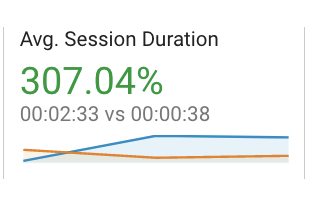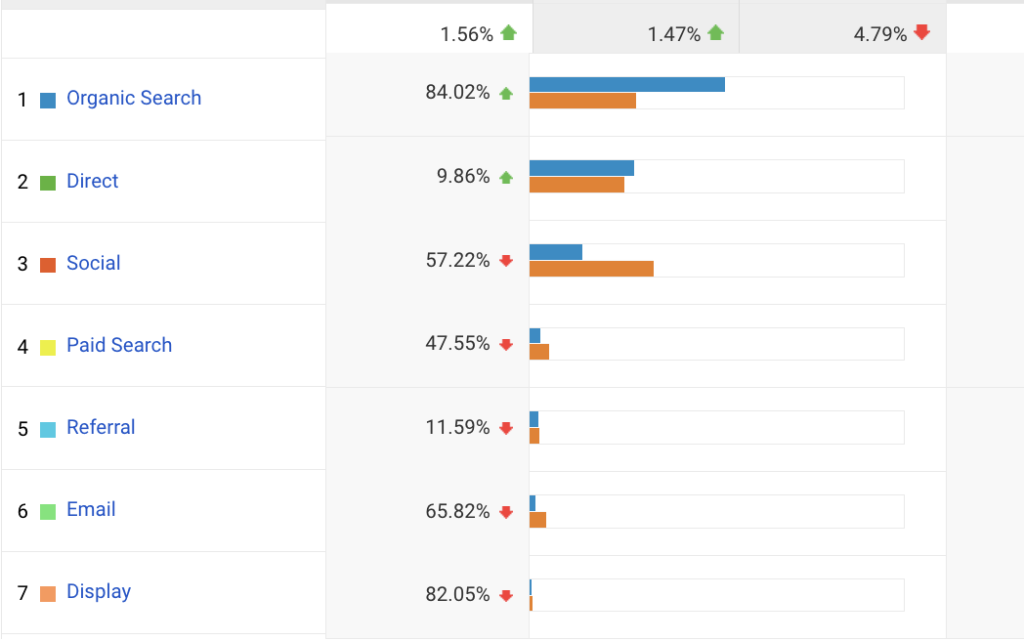
How many blog posts should you publish for SEO?
The frequency at which you should publish blog posts depends on your goals and resources.
Suppose you are using your blog to drive traffic to your website. In that case, it can be helpful to publish new content regularly to keep your readers engaged and to help your site rank higher in search engine results. However, it is also essential to consider how much time and resources you have available to create and promote new content. If you’re a one-person show, sometimes spending all your spare time blogging when you could be doing the core duties of your business might be detrimental.
When they first started gaining extraordinary traction that saw them become the publishing giant that they are today, Huffington Post started pumping out an astonishing 1200 articles a day. That is not a typo. I meant to write ‘a day!’ But unless you have a team of 532 full-time editorial staff like they did, you are unlikely to achieve that kind of content volume.
How many blog posts do I post?
My website saw a 69% increase in page views from 24th Dec 2022 to 7th Jan 2023 compared to the previous period. And a 307% increase in average session duration. This was when I posted pretty much all my blog posts for 2022 (busy year!). I posted almost one blog post per day. Additionally, I created far longer content than I usually do (a goal of mine for a while now) and have branched out into other keyword areas and topics such as blogging and more SEO stuff.

Now that’s also partly because I increased social media sharing during the Dec to Jan period (as I was on holidays, so I had more time to devote to my business’s marketing). But it would be foolish to discount the increase in content, helping to entice more traffic.

I already have a blog post bank of around 120 posts, so I have a great solid base to really build my blog upon. And as I’ve mentioned here, this year, 23.4% of my income came from leads who found my via Google Search. And 29% of my overall leads (whether they turn into clients or not) came from search. You can see why I’m a big proponent of SEO as a way to get new leads.

Blog post frequency guidelines
Here are a few general guidelines to consider:
If you are just starting and are looking to build an audience, it may be helpful to publish new content at least once a week. This will allow you to establish a consistent publishing schedule and produce a variety of content for your readers. Weekly is a consistent and reliable content timeframe for most businesses and should be built into your general marketing duties. ‘Businesses that post four or more blogs weekly get 3.5 times more traffic.’
And, get this, ‘22% of bloggers post every single week’, so if you post twice a week or even five times per month, you are doing more than nearly a quarter of bloggers!
I’m going to propose that if you have no content at all, that you do a bulk lot of content and publish 100 posts as quickly as you can (without sacrificing quality). If you can, aim for 100 blog posts within the first month. That way, you will have an excellent content base to work from and start seeing SEO results quite quickly. Plus, it will be easier to create more content from existing content.
You can see in this SEO case study that this business generated $54,285.30 in sales in a month by posting 7 blog posts a week and adopting a few other techniques, such as link building.
If you have a more established blog and are looking to maintain a steady traffic flow, it may be sufficient to publish new content once or twice a month. This will give you time to create high-quality, in-depth content that resonates with your audience.
If this is your strategy (and it’s always beneficial and more efficient if you have an SEO content strategy), then I recommend creating in-depth blog posts that are at least 1200 words that directly answer questions that your potential audience will have. And/or are targeted for a high-volume keyword that points to one of your core static pages. A how-to SEO article is an example of this.
If you have a medium or large team and are able to produce new content on a daily or weekly basis, you may want to consider increasing the frequency of your blog posts. This can help you stay top-of-mind with your audience and can also help you rank higher in search engine results. It also gives you the option of mixing up the variety of your content. Each month, you can publish several people profiles, an SEO keyword-rich article, a project review, a case study and a how-to guide. Keeping your audience entertained and hooked with helpful content. Plus, it gives the added bonus of giving you heaps and heaps of fresh content to share via your social media or email marketing channels.
Ultimately, the right frequency for your blog will depend on your goals, audience, and resources. It’s important to find a balance that works for you and to be consistent in your publishing schedule.
Publishing new content on a regular basis can be helpful for driving traffic to your website and for keeping your readers engaged. However, it is also important to consider the time and resources it takes to create and promote high-quality content. If you publish too frequently, you may struggle to produce content that meets your standards or to promote your content effectively. The second your blog posts become amateur or repetitive, you may need to take a step back and publish less frequently (but write better content) or outsource to a freelance copywriter.
How many blog posts does your site need to start ranking for SEO keywords?
There is no specific number of blog posts that you need to publish in order to start ranking for specific keywords in search engine results. The number of blog posts you need to publish will depend on a variety of factors, including the competitiveness of the keywords you are targeting, the quality of your content, and the strength of your website.
I’ve had clients rank for their SEO keywords with only a handful of blog posts, so it doesn’t have to be many to get started. But if you’re one of those people that just like to have a number to aim for, I will suggest 100 blog posts. Even if you fall short, you will still have some content on your site, which is the main thing.
Here are a few general guidelines to consider when it comes to publishing blog posts for SEO purposes:
- Publish high-quality, in-depth content: In order to rank well in search engine results, it’s important to publish high-quality content that is relevant to your target audience. This means writing in-depth, well-researched articles that cover a specific topic in detail. Not sure where to start with this? I have a video-module online course to help with this very thing.
- Use targeted keywords: In order to rank for specific keywords, it’s important to include those keywords in your content in a natural way. This includes using the keywords in your article titles, headings, and throughout the body of your content. As a reader of mine, you get a free 14-day trial of my favourite SEO keyword research tool.
- Build high-quality inbound links: Inbound links from other websites can help improve your search engine rankings. It’s important to focus on building links from high-quality, authoritative websites in your industry.
- Optimise your website for SEO: There are many factors that can impact your search engine rankings, including the structure of your website, the speed of your website, and the use of relevant keywords in your website’s meta tags and titles. It’s important to optimise your website for SEO in order to improve your rankings.
How can you post more blog content?
There are a few strategies you can use to increase the frequency of your blog posts:
- Plan ahead: Create an editorial calendar that outlines the topics you plan to cover in your blog posts and the dates on which you will publish them. This can help you stay organised and ensure that you have content ready to go on a regular basis.
- Collaborate with others: Consider partnering with other writers, bloggers, or experts in your industry to create content for your blog. This can help you generate new ideas and can also allow you to publish more content in a shorter amount of time. Maybe do a swap with someone who wants to reach more of your audience and vice versa? They can showcase their industry knowledge whilst promoting their business or service, and you can host on your blog and share amongst your channels. I have a fruitful guest posting option.
- Repurpose existing content: If you have a backlog of content that you haven’t published yet, or even if you have, consider repurposing it for your blog. This can include updating old articles or turning them into new formats, such as infographics or videos. I am a huge fan of this and think this is an area where most people overlook great content.
- Outsource content creation: If you don’t have the time or resources to create all of your content in-house, consider outsourcing some, or all, of your content creation to a freelance copywriter. This can help you increase the frequency of your blog posts without sacrificing quality, particularly if you hire an experienced copywriter like me who knows about SEO.
Want to get to 100 blog posts quickly? Let me help.



